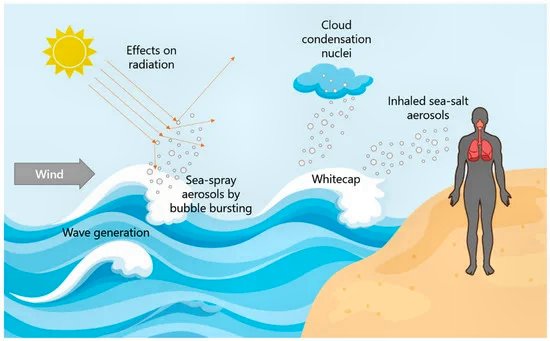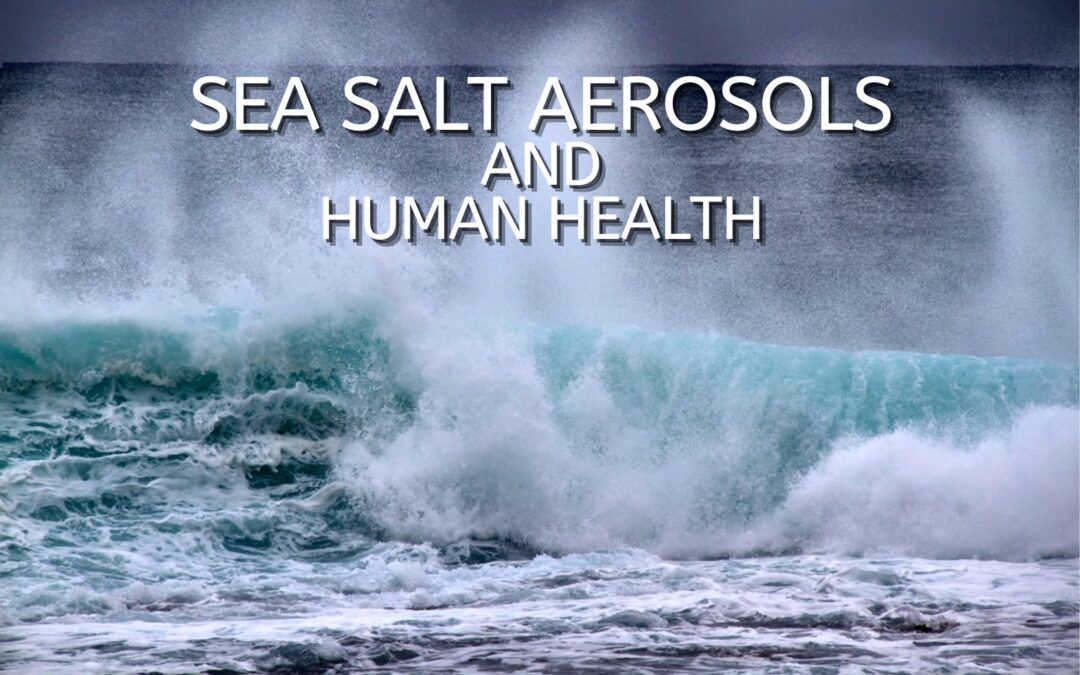Sea salt aerosols (SSAs) are tiny particles produced primarily by the ocean and have significant impacts on both the environment and human health.
Production and Environmental Impact

Sea Salt AerosolsSSAs are predominantly generated by natural processes involving ocean water.
A key source is the sublimation of blowing snow in Arctic regions. When wind speeds exceed a certain threshold, snow particles become airborne, leading to the production of SSAs.
These particles, contaminated by sea water ions, are formed through the sublimation of ice, leaving behind residual particles primarily composed of sea salt (source).
In the Arctic, SSAs produced from blowing snow are a major component of aerosol concentration. During blowing-snow events, concentrations of fine-mode aerosols (10 to 300 nm in diameter) and cloud condensation nuclei (CCN) are significantly increased.
This process substantially impacts cloud properties, contributing to an increase in cloud droplet number concentration and longwave emissivity, ultimately leading to surface warming under cloudy skies. These indirect aerosol effects are crucial in the Arctic, where low-level clouds are highly sensitive to changes in aerosol concentration.
Fine SSAs produced by sublimating blowing snow are an important source of CCN in the Arctic, influencing cloud formation and microphysical properties. This process has a warming effect on the Arctic surface temperature by increasing cloud emissivity, liquid water path, and cloud lifetime, all of which contribute to higher downwelling longwave radiation.
Modeling studies have shown that blowing-snow-produced SSA accounts for approximately 27.6% of the total particle number concentration in the Arctic, highlighting its significant role in aerosol-cloud-climate interactions (source).
Effects on Human Health

Effects of Sea Salt Aerosols on Human HealthThe impact of SSAs on human health is multifaceted. These aerosols contain microbiota and biogenic molecules, which can influence health.
For instance, exposure to certain components of SSAs, like brevetoxins (produced by marine dinoflagellates), can lead to respiratory symptoms, especially in individuals with asthma (source).
Research has shown that components of SSAs can interact with the mammalian target of rapamycin (mTOR) signaling pathway. In a study, human lung cells exposed to natural SSA extracts exhibited effects similar to those of a chemical mTOR inhibitor, suggesting potential beneficial health effects at environmentally relevant concentrations.
These effects include the regulation of genes linked to the mTOR pathway and pathways related to glycogenesis, lysosome, spliceosome, and steroid biosynthesis. The mTOR pathway is a key regulator of cell growth and proliferation, and its inhibition is associated with health benefits such as anti-cancer and anti-inflammatory effects (source).
Moreover, SSAs have been hypothesized to induce positive health effects via interaction with specific cell signaling pathways, potentially contributing to more effective immunoregulation and reducing inflammation. Biogenic molecules in SSAs, produced by marine phytoplankton and other organisms, could have pharmaceutical potential, particularly in targeting PCSK9, a protein involved in lipid homeostasis and apoptosis (source).
In conclusion, SSAs are significant both environmentally and health-wise. They play a critical role in the Arctic climate system and potentially offer pharmaceutical applications due to their interaction with critical biological pathways. However, further research is necessary to fully understand the extent and mechanisms of these effects.
We hope you found the information above useful. Leave a comment below, or contact us if you have any questions.
